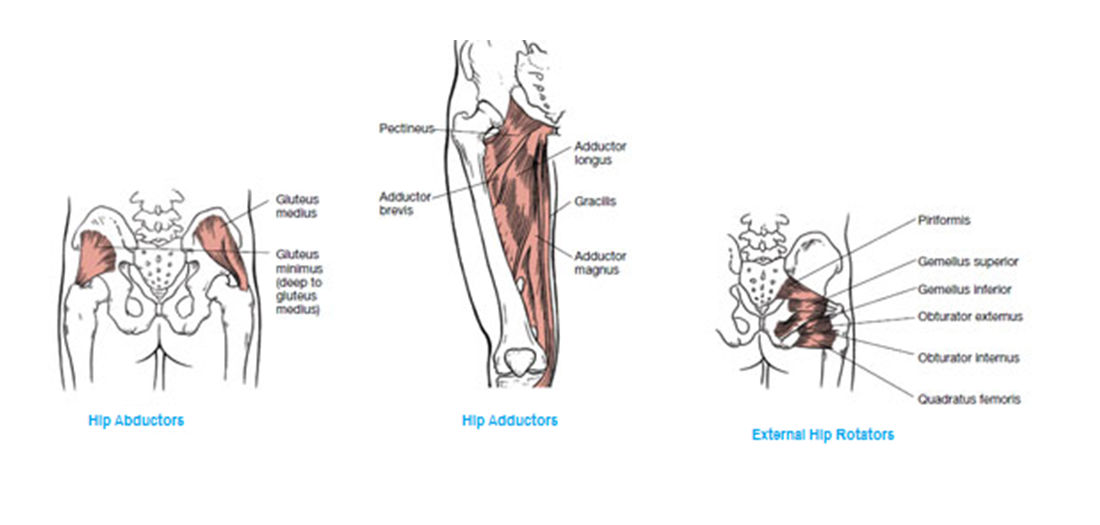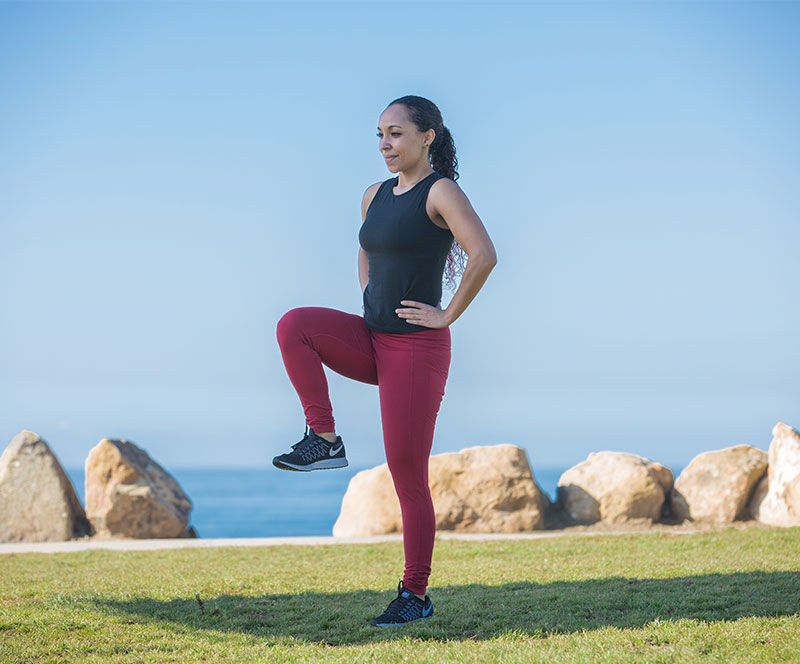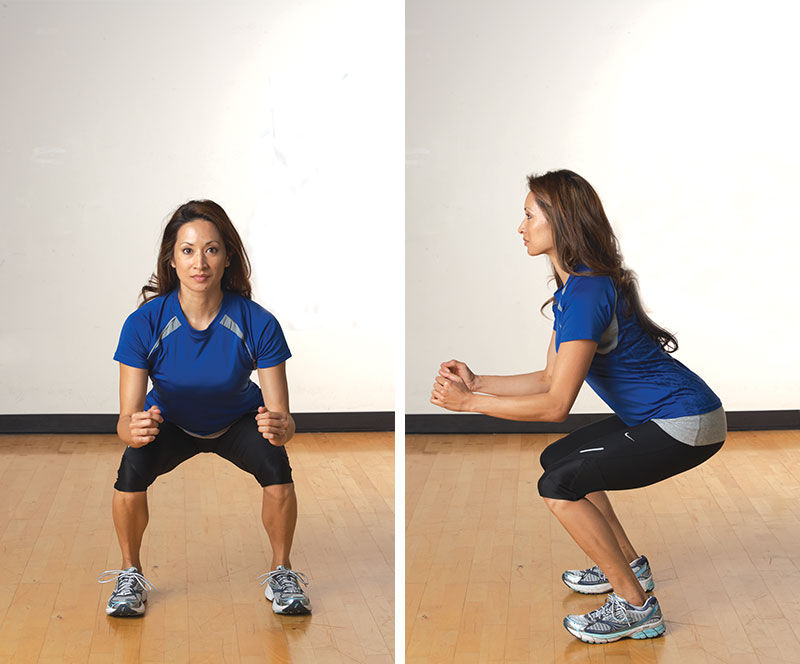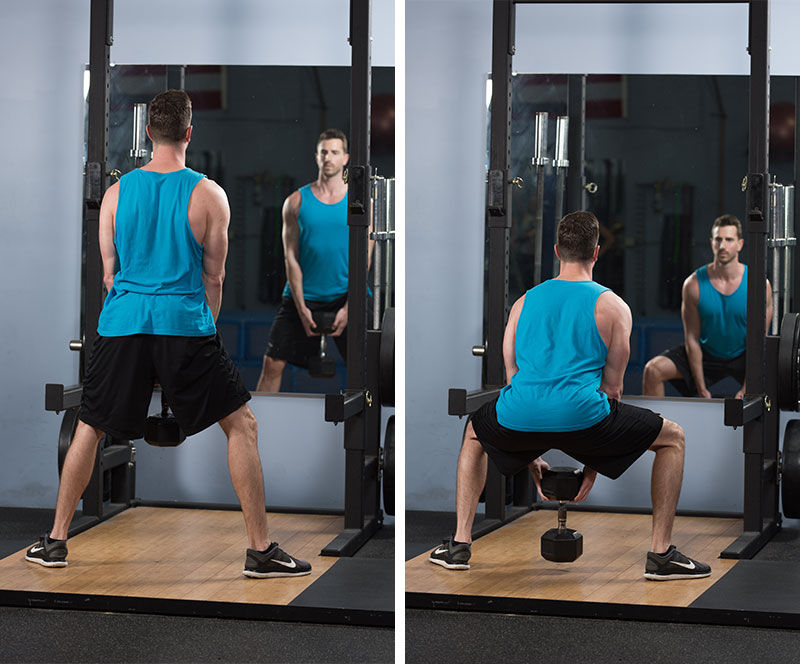Mobility, stability and strength are all important factors in having healthy spinal alignment. When working with sedentary or untrained individuals, beginning with a basic core strengthening routine can provide huge benefits in stabilization and strength. In tough cases, you’ll need to look deeper, literally, to get the outcome you and your client are looking for.
There are many causes of low back pain, so make sure your client has been cleared by their doctor to participate in an exercise program. Similarly, you may find that you are corresponding regularly with your client’s chiropractor or physical therapist. In these cases, you’ll need to clearly articulate your exercise programming and be prepared to discuss the strength and mobility observations you’ve made during your assessment.
When addressing back pain due to musculoskeletal dysfunction, abdominal or core strengthening exercises have long been a go-to recommendation to stabilize the spine. In situations where this hasn’t been effective, it is important to remember that the spine is similarly supported by deeper musculature that may need to be addressed.
The Anatomy
When we review the anatomy of the musculature supporting the spine, we quickly note the multifidus, transverse abdominus, rectus abdominis, internal and external obliques, as well as the latissimus dorsi and the gluteal complex. These muscles all make up what we think of as the core.
Looking a layer deeper, you'll notice that stabilization of the pelvis and the lumbar spine is also supported by the psoas, and the lumbo-pelvic-hip complex relies on the piriformis, illiacus and pelvic floor.
The lumbo-pelvic-hip complex is an intricate connection between the lower limbs and spine. This complex set of seemingly immobile bones provides stability and acts as an essential coordination point in the normal contralateral movement pattern of most movement, including the most basic movement pattern of all, walking.
Lifestyle Effects on the Musculature
The balance of mobility, stability and strength is essential to providing coordination throughout the kinetic chain. Sitting for long periods of time creates an imbalance, providing the perfect environment for connective tissue to shorten and weaken.
Other environmental influences can have the same effect on the pelvic floor. Pregnancy and childbirth, for example, can stretch, damage and/or weaken the pelvic floor muscles. Likewise, lack of activity and obesity can both take a toll on the ability of these muscles to perform their essential function.

Lengthen & Strengthen
It is well documented that sitting leads to shortened iliacus and psoas muscles, and the entire group of hip flexors. Because they are held in a shortened position all day long, these muscles lose their mobility and elasticity. You may well know that it is important to focus on increasing the range of motion of these muscles through holding static stretches for 30 seconds to five minutes. This can decrease any hyperlordosis caused by the shortened muscles that may lead to increased back tightness or pain.
Don’t stop there. Once you increase mobility and elasticity, the body will have a stabilization demand. You must increase strength and proprioception in the hip flexor muscles to keep them from finding stability by tightening again.
These exercises will increase strength, stabilization and proprioception of the muscles.
Standing Knee Raise
In this exercise, your client must stand on one foot; however, training balance is not the first step. At first, your client should hold on to something stable, like a ballet bar or the wall.
- Place a small hurdle or cone directly in front of your client. The hurdle should be low to start and can increase in height as your client becomes stronger.
- Standing on one foot, raise the opposite knee into a marching position.
- Move the knee across the body so that the toe taps on the floor on the other side of the hurdle (in front of the opposite foot).
- Lift the knee again and return to the starting position.
- Throughout the exercise, cue your client to keep the hips level and spine straight.
- Repeat for multiple sets and reps. At first, fatigue may set in early.
Regress this exercise: If the hip hikes with the knee raise, lower the height of the hurdle and consider stretching the quadratus lumborum.
Progress this exercise: Increase the height of the hurdle until your client’s foot is clearing the height of their knee.
Once this becomes easy, decrease the stabilization. Have your client hold on to a walking stick, dowel rod or your hand instead of the wall.
Once your client can progress to balancing without an external stabilizing method, add a light leg weight or use a cable with a leg cuff. Note: you may have to add back in the external stabilization after adding weight and move through the progression again.

Pelvic Floor: Beyond Kegel’s
You have likely heard of Kegel exercises. These exercises are a great way to reconnect with the pelvic floor muscles if they are not firing. However, as with any muscle, progressive load is required to improve strength.
Sumo squats and deep squats are a great way to engage the pelvic floor muscles under a progressively greater load.
When working with a client with occasional back pain, an appropriate squat progression becomes even more important.
- Start with box squats or chair squats to ensure you are teaching your client to properly hip hinge.
- Once your client has the strength and mobility to perform a box squat, remove the box and continue to increase range of motion of the squat.
- Using a suspension trainer or the bar on a Smith machine is a great counter support to allow for good form and greater range of motion.
- Once your client is ready for weighted squats, stay away from back squats. Goblet squats, sumo squats and T-bar squats are all great ways to add weight without the added strain on the shoulders.


These exercises do not represent a complete program for back pain, but instead serve as a deeper level of exercise progression for clients who continue to struggle with recurring incidents. Slow and steady progression is key to decreasing back pain, so start at the very lowest progressions recommended and consistently progress only when ready.
If you haven’t already done so, expand your professional network to include chiropractors, massage therapists and physical therapists. It often takes a collective mind to help those with stubborn back pain, and an expanded network is an excellent way to ensure that your client is getting the best of care.
Want to learn more? Read about the muscles of the core.




 by
by 









 by
by